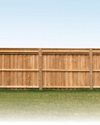Fix it, maintain it, improve it.

Mini-split systems
What is a mini-split?
Mini-split systems are A/C and heating units that are increasingly popular, mainly because most installations don’t require ductwork. Similar to conventional HVAC systems, mini-splits have an outdoor condenser and one or more air handlers inside. They’re somewhat like a window A/C unit split in half—hence the name.
How does a mini-split work?
Like a conventional A/C unit, a mini-split uses copper tubing to carry the refrigerant from the outdoor unit, which contains the compressor and condenser, to the indoor air handler. But with a mini-split, the conditioned air blows directly out of the indoor air handler into the room, rather than being routed through ductwork. A typical compressor can run four or five air handlers, which are mounted in different zones (or rooms) throughout the house. The indoor units can be mounted on the wall, floor or ceiling.
In the winter, the refrigerant absorbs heat from the outside (because the refrigerant is far colder than the air) and carries it to the air handlers. In the summer, the refrigerant absorbs heat from inside the house, carrying it out to cool the house.
Will a mini-split work for you?
A mini-split is a viable option for a house with no existing ductwork, such as one with a boiler and radiators. You won’t have to install ductwork, which can be both expensive and difficult to accommodate. A mini-split can also be a good choice for a large house with rooms that don’t get used often. Rooms that aren’t served well by existing forced-air systems also make good candidates.
This story is from the May 2018 edition of The Family Handyman.
Start your 7-day Magzter GOLD free trial to access thousands of curated premium stories, and 9,000+ magazines and newspapers.
Already a subscriber ? Sign In
This story is from the May 2018 edition of The Family Handyman.
Start your 7-day Magzter GOLD free trial to access thousands of curated premium stories, and 9,000+ magazines and newspapers.
Already a subscriber? Sign In

7 Bicycle Maintenance Tips
Keep your bike in tiptop shape and ride safe!

SETTING FENCE POSTS WITH EXPANDING FOAM
Any fence builder knows you need strong posts for a strong fence, and that means backfilling the postholes with a dense, hard material other than dirt.

PEBBLE MOSAIC STEPPING STONES
COLLECT SOME RIVER ROCK AND MAKE YOUR OWN UNIQUE STEPPINGSTONE PATH

EARTH-FRIENDLY WEED KILLERS
HEALTHIER CHOICES FOR HUMANS AND THE ENVIRONMENT

DIY! HYDROPONIC GARDEN
FRESH VEGETABLES AT YOUR FINGERTIPS

GROW MINI VEGETABLES
GROW A GARDEN IN A TINY SPACE!

BUILD A VERTICAL GARDEN
TIME TO GROW UP!

MODERN WATER FOUNTAINS
A SPLASH OF PEACE FOR YOUR PATIO

9 ALTERNATIVE USES FOR SAWDUST
Every fully stocked wood shop has a table saw. You can usually find a pile of sawdust under it, even if it's used only occasionally. If a shop has a belt sander or band saw, there's probably another pile of finer sawdust under that. Even people without stationary tools have sawdust accumulation on their workbenches.

INSULATE WITH FOAM
IT'S A GREAT ALTERNATIVE TO FIBERGLASS